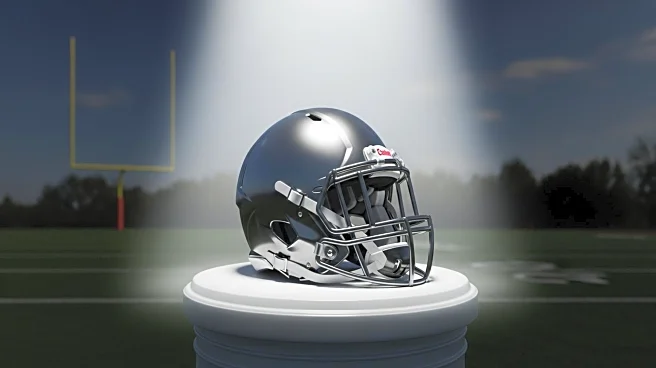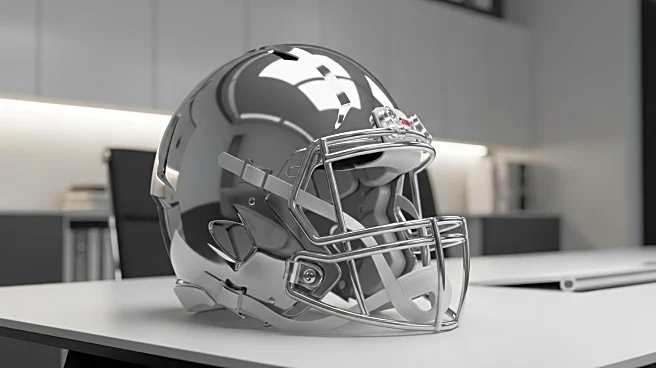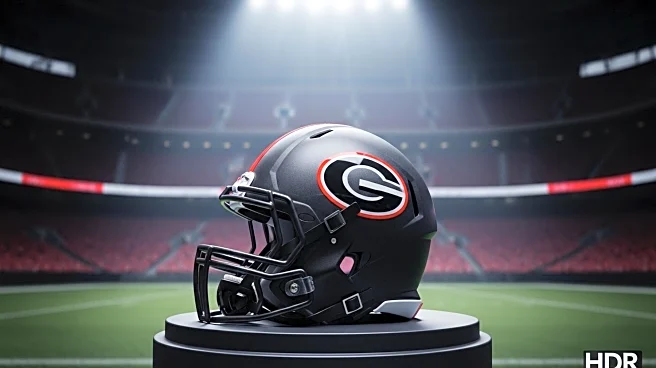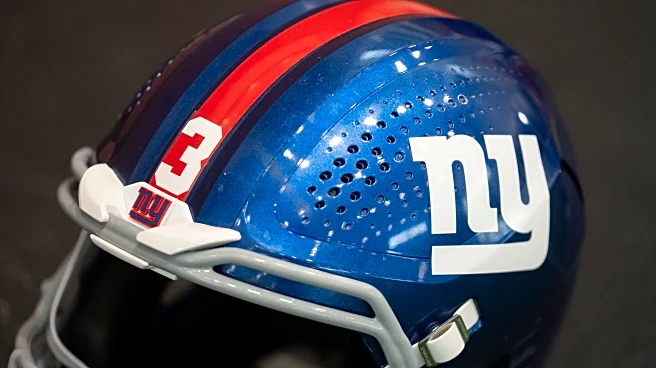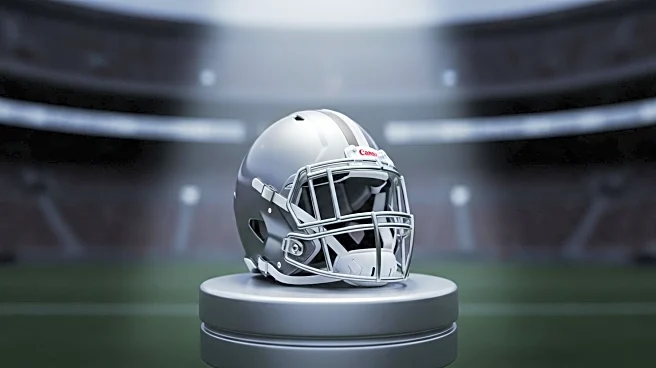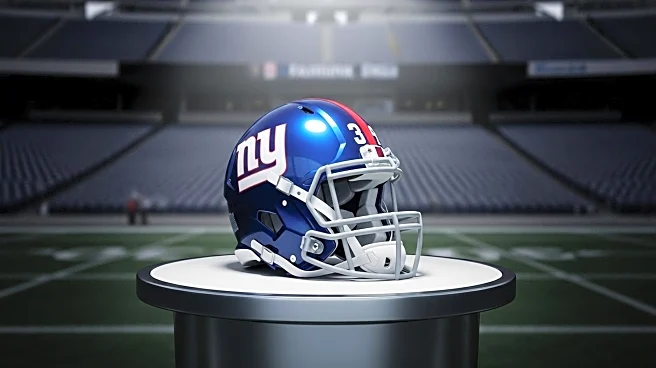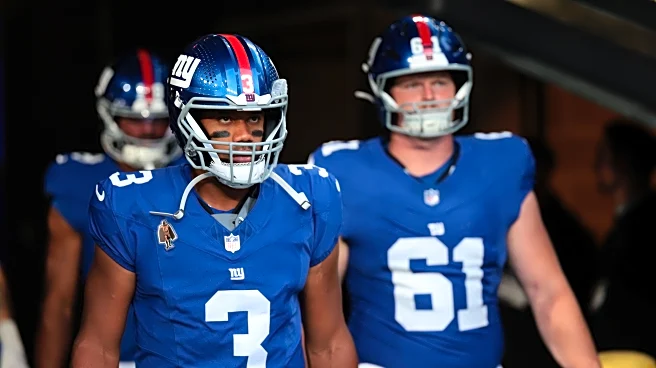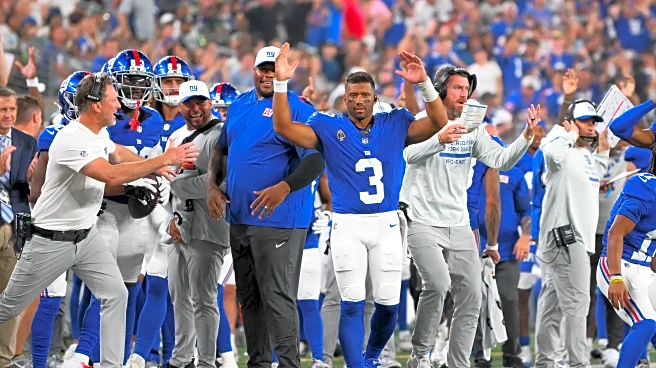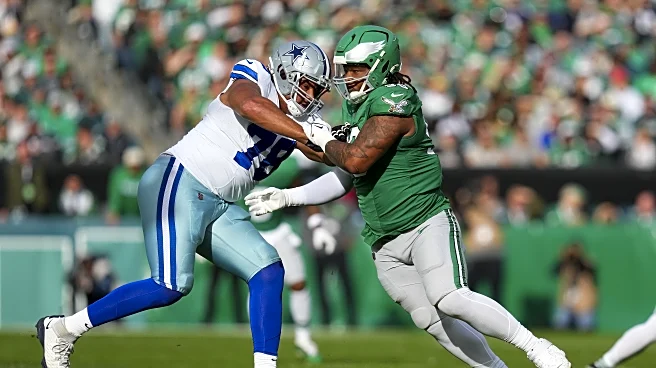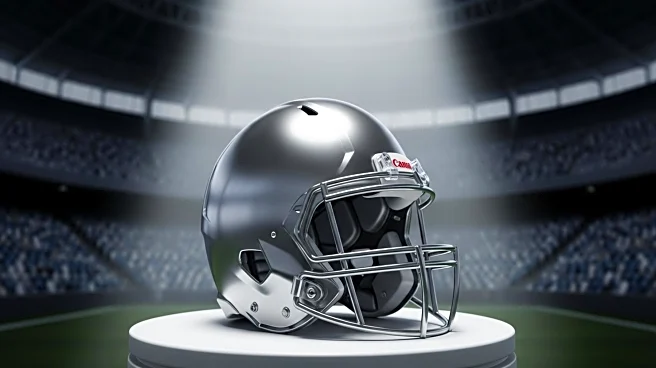What's Happening?
The New York Giants have announced their quarterback depth chart for the upcoming NFL season, with Jaxson Dart emerging as the backup quarterback behind starter Russell Wilson. Dart, a 22-year-old rookie, has impressed the coaching staff during training camp and preseason games, surpassing veteran Jameis Winston for the No. 2 spot. The Giants had initially planned for Dart to develop slowly, but his performance has led to a change in strategy. Coach Brian Daboll has expressed confidence in Dart's ability to step in if needed, as the team prepares for their season opener against the Commanders.
Why It's Important?
The decision to promote Jaxson Dart as the backup quarterback is significant for the Giants, as it reflects a shift in their approach to developing young talent. Dart's rise to the No. 2 position indicates the team's willingness to invest in his potential, which could impact their long-term strategy. This move also highlights the competitive nature of NFL training camps, where rookies can challenge established veterans for key roles. For the Giants, having a capable backup in Dart provides insurance in case of injury to Russell Wilson, ensuring stability in their quarterback lineup.
What's Next?
As the Giants head into the regular season, all eyes will be on Jaxson Dart to see how he performs in his new role. The team will continue to evaluate his progress and readiness to step in during games. Coach Brian Daboll may adjust the depth chart based on Dart's performance and the team's needs. Additionally, the Giants will focus on their season opener against the Commanders, where Dart's position as backup will be tested. The team's decision-making regarding quarterback roles will be crucial in shaping their season trajectory.
Beyond the Headlines
The promotion of Jaxson Dart could have broader implications for the Giants' organizational culture, emphasizing merit-based advancement and the importance of training camp performance. This decision may inspire other young players within the team to strive for excellence and challenge veteran positions. Furthermore, it could influence how other NFL teams approach rookie development and depth chart decisions, potentially leading to a shift in league-wide strategies.
